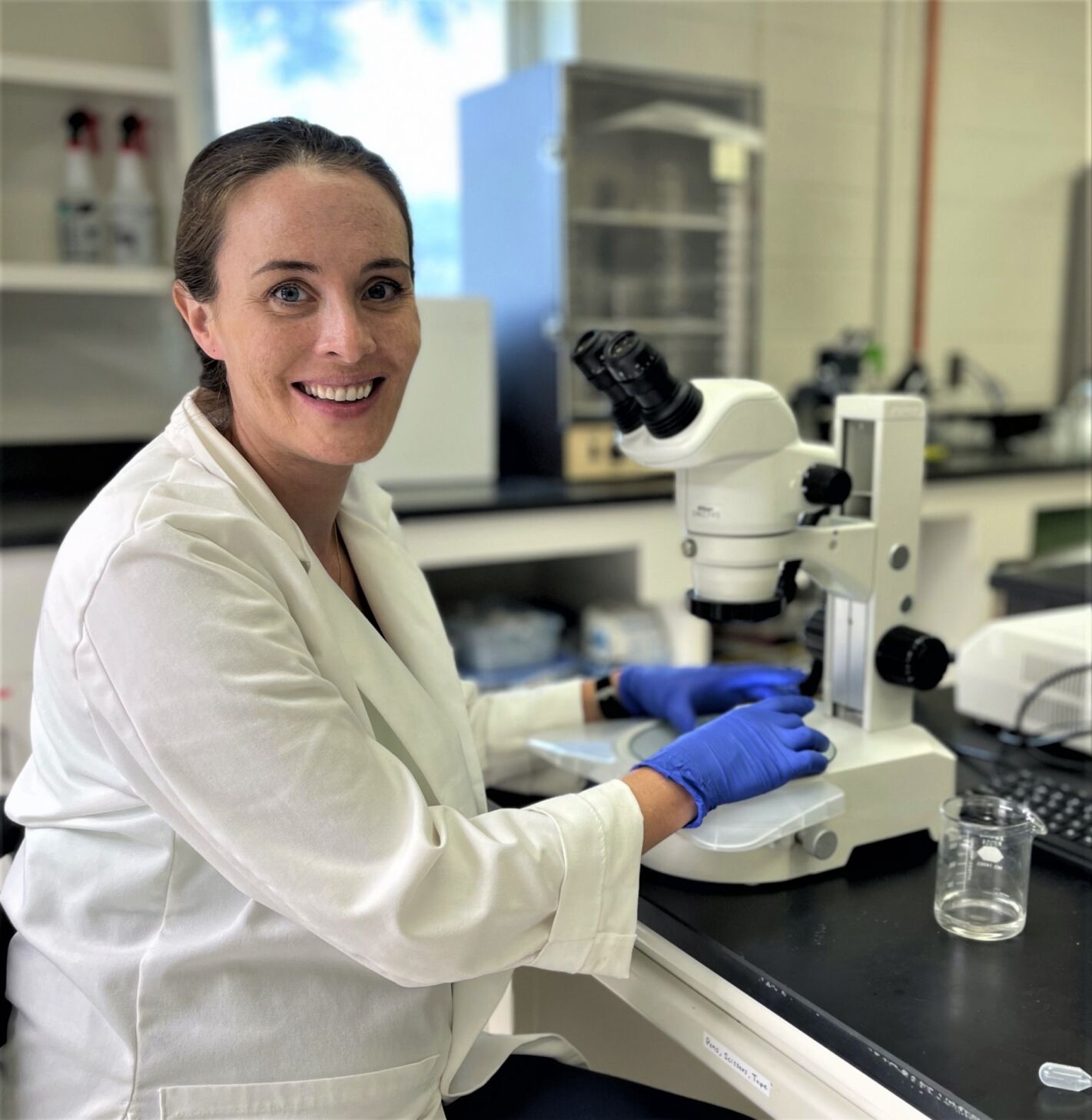Beneficial nematodes protect plants, and a Texas A&M AgriLife Research project aims to provide a better understanding of these biological bodyguards
AgriLife Research and Texas A&M Department of Entomology scientist Anjel Helms, Ph.D., is investigating the relationship between plants and tiny worms called entomopathogenic nematodes, or EPNs, that kill insect pests in the soil. The goal of the study is to advance scientific knowledge about how plants react to EPNs and activate defense mechanisms against insect herbivores.
The three-year project is titled “Chemical cues from beneficial nematodes enhance plant resistance and strengthen biological control.” It was funded by U.S. Department of Agriculture National Institute of Food and Agriculture through the Pests and Beneficial Species in Agricultural Production Systems Program.
The $680,000 grant will expand work Helms began as a postdoctoral fellowship study in 2017. Helms is collaborating with David Shapiro-Ilan, Ph.D., at the USDA-ARS Southeastern Fruit and Tree Nut Research Station in Byron, Georgia, and Fatma Kaplan, Ph.D., at Pheronym Inc. in Woodland, California. Shapiro-Ilan and Kaplan have extensive experience and expertise focusing on nematodes and nematode pheromones, respectively.
Helms said advancing science related to the plant-EPN relationship could improve pest control for the spectrum of plants from commercial crops and home gardens to landscapes and turfgrass. The research aims to advance the understanding and use of EPNs as an effective, economic and environmentally sustainable way to control root-damaging pests.
“Using EPNs for biological control has been studied for a while, but we’re proposing to use them to get multiple benefits for plant protection and better understand what triggers a plant’s defenses,” she said. “We want to be able to harness and enhance this interaction between plants and beneficial nematodes.”
Beneficial nematodes as plant bodyguards
Insects that feed on plant roots, such as rootworms, cucumber beetles and white grubs, are among the most economically devastating crop pests because underground infestations are challenging to detect and difficult to control, Helms said.
Traditional control methods against root-damaging insects include prophylactic pesticide applications, she said, but they can be costly and damaging to the environment. Biological controls, including the introduction of beneficial organisms to kill pests, are a proven strategy that can improve sustainable options for pest management and reduce dependence on insecticides.
EPNs are commercially available, but they are not widely used as a biological control within U.S. commercial agriculture. But EPNs are relatively inexpensive, and the novel approach appears promising, Helms said.
A major goal of the project is to uncover additional benefits from and new techniques for utilizing EPNs as a biological control, she said, and ultimately increasing adoption rates among farmers.
Aside from their knowledge about EPNs, Helms said Shapiro-Ilan and Kaplan also provide expertise regarding potential commercial applications of the research to make EPNs a viable option for various users.
“We’re really trying to develop and improve another tool for producers to have in their tool kit,” she said. “But there are also the potential positive environmental and economic impacts of reducing insecticide use.”
Can EPNs strengthen plant defenses overall?
EPNs and plants have a symbiotic relationship. Plants send chemical cues indicating they are under attack from pests and EPNs respond.
These beneficial nematodes’ entire life cycle revolves around finding insects in the soil and killing them, so the pests do not harm plants, Helms said.
The research team’s preliminary findings suggest EPNs also produce characteristic chemical cues that plants respond to by enhancing their defenses against insect pests and diseases. Helms said the team wants to better understand how plants respond, whether they relax or raise their defenses to further levels, depending on the presence of EPNs.
Helms hopes the study can show how beneficial EPNs might increase plant protection overall by strengthening plants against a variety of pests and stressors.
“The use of nematodes and naturally occurring symbiotic ecological reactions and interactions to control pests might feel beyond the reach for many producers and even home gardeners,” she said. “But we hope to show how effective nematodes can be and that plants receive multiple benefits from their presence.”




